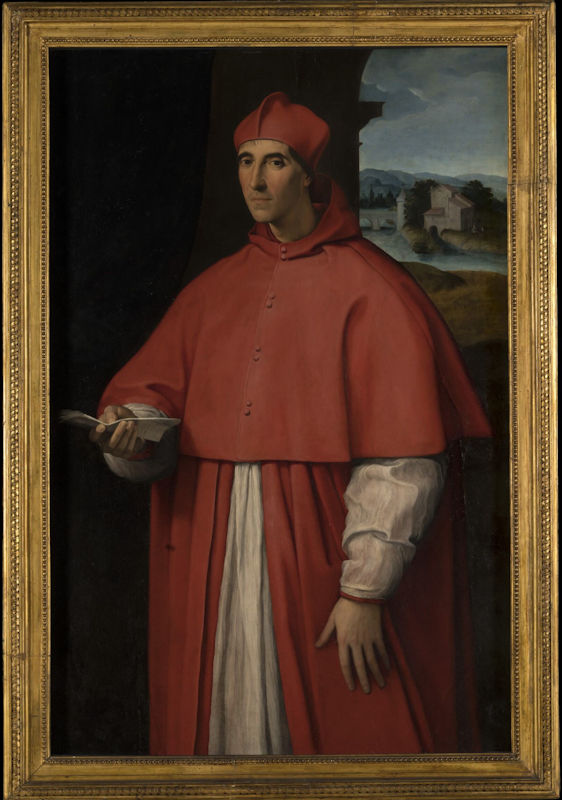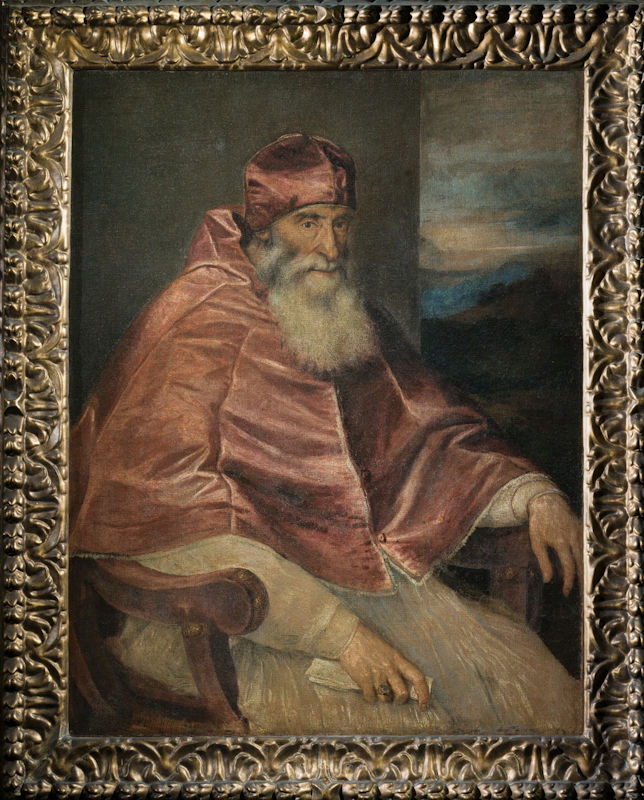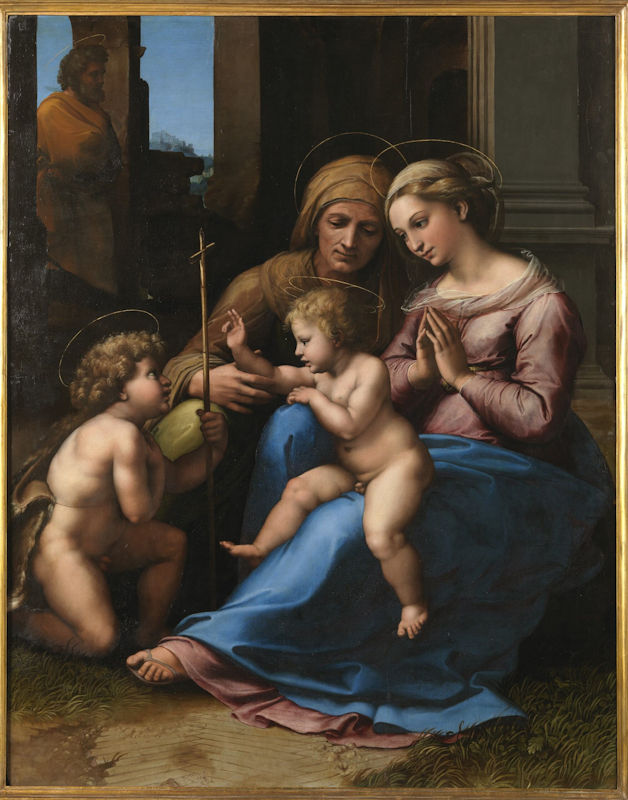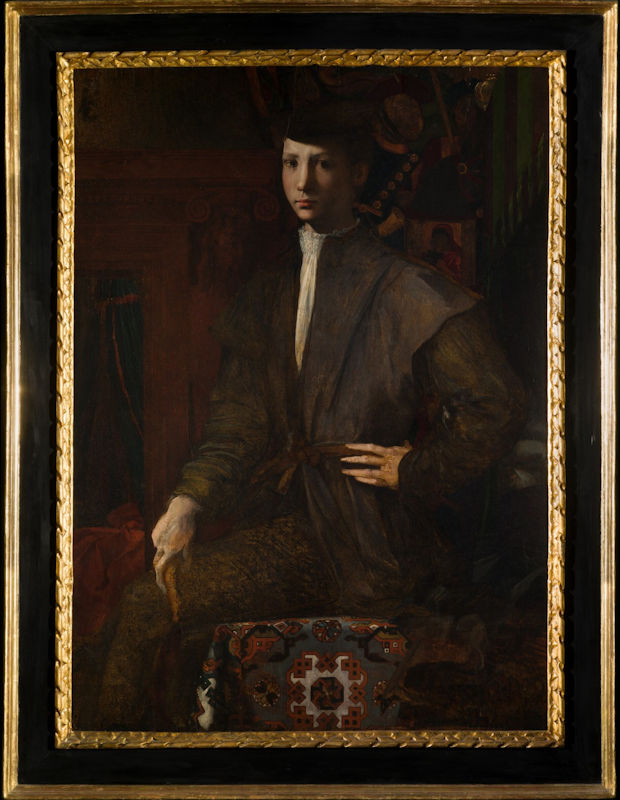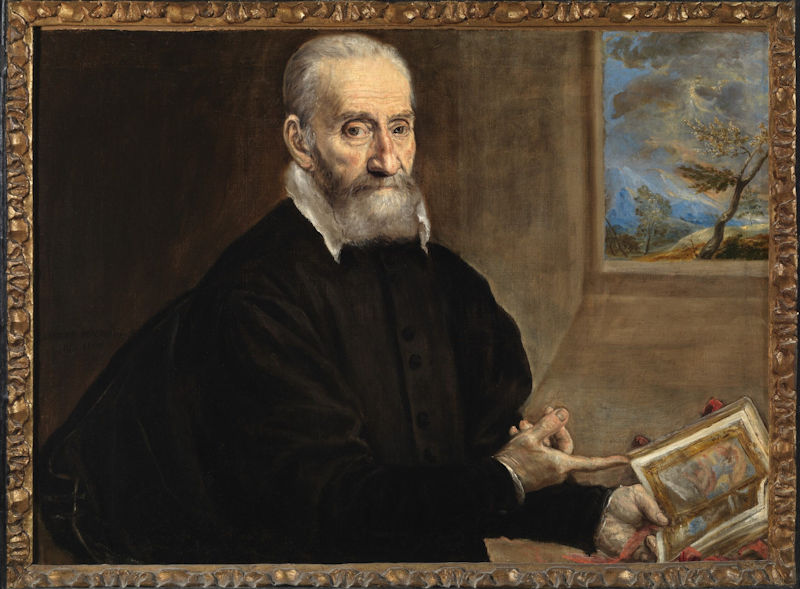The exhibition, curated by Chiara Rabbi Bernard and Claudio Parisi Presicce, is dedicated to the Farnese collection, the highest expression of erudite collecting, supported by Pope Paul III (1534-1549) and his grandchildren. The exhibition, set up at the Capitoline Museums, Villa Caffarelli, is organized in collaboration with Civita Mostre e Musei and Zètema Progetto Cultura.
One hundred and forty masterpieces including ancient sculptures, bronzes, paintings, drawings, manuscripts, gems and coins from the most prestigious collection of works of art and archaeological finds of the Renaissance follow one another in the exhibition spaces of Villa Caffarelli, at the Capitoline Museums . A scientific project of high value and great relevance in the context of the jubilee year tells the story of the Farnese Collection by reconstructing the moment of its maximum splendor , from the first decades of the 16th century to the beginning of the 17th.
The exhibition project stems from a reflection on the impact that Pope Paul III Farnese had on the city of Rome on the eve of the Jubilee of 1550.
The pontiff was responsible for several significant interventions in the city, including the monumentalization of the Piazza del Campidoglio, entrusted to the genius of Michelangelo .
The exhibition “ The Farnese in 16th-century Rome. Origins and fortune of a Collection ” brings together part of the immense artistic heritage of the Farnese family, thanks to the collaboration of the many museums and institutions that today preserve this invaluable legacy. The largest contributions have come from Naples, a city that houses numerous works that belonged to the Farnese Collection in the National Archaeological Museum , the Museum and Royal Wood of Capodimonte and the National Library "Vittorio Emanuele III" . Equally valuable is the collaboration of other lending institutions, including the National Galleries of Ancient Art in Rome – Galleria Corsini and the Galleria Borghese in Rome , the Uffizi Galleries and the National Museum of Bargello in Florence , the National Gallery of Parma - Palazzo della Pilotta, the Vatican Apostolic Library, as well as prestigious foreign institutions such as the Louvre Museum in Paris, the Museum of Fine Arts and Archaeology in Besançon , the Royal Collection Trust , and the Morgan Library in New York.
Begun by Alessandro Farnese, who ascended to the papal throne as Paul III in 1534, and further enriched by the work of his nephews, Cardinals Alessandro and Odoardo, the Farnese Collection was among the most famous artistic and archaeological collections, bringing together a large number of masterpieces of ancient art, including sculptures, paintings and drawings by the greatest artists of the time, gems, coins and precious manuscripts. It also represented the instrument through which the Farnese family sought to consolidate its prestige in papal Rome. In fact, it served to legitimize it as the promoter of a new Rome, capable of bringing ancient majesty back to life through culture and the arts and, at the same time, to give lustre to the figure of Pope Paul III by strengthening his pontificate.
In the first half of the 16th century, the birth and above all the development of the Collection took place in a particular context: the profound and rapid urban transformation of Rome, desired and promoted by Pope Paul III, after the tragic Sack of Rome in 1527. In particular, Pope Farnese was responsible for the initiative of the grandiose renovation of the Piazza del Campidoglio, entrusted to the genius of Michelangelo, with the placement of the famous bronze statue of Marcus Aurelius , transferred in 1538 from the Piazza del Laterano.
If the passion that Paul III had for antiquity, shared and increased by his nephew, the Grand Cardinal Alessandro, brought Rome back to the glorious imperial era, the fact that the Farnese acquired and placed an increasingly important number of ancient masterpieces in their Palace in Campo de' Fiori (including, for example, the Hercules, the Bull and the Flora Farnese , discovered between 1545 and 1546 during the excavations in the Baths of Caracalla and immediately transferred to the courtyard of the Palace), symbolically manifested the power that the Family had assumed in those years. The formation of such an exceptional nucleus of works clearly highlighted the vocation of Palazzo Farnese: that of a museum. A function that can be further validated by the fact that already in the 16th century the Palace, known not only for its architectural majesty but also as an important political and social center for the nobility and the clergy, was included among the most important places in Rome, which the guides invited to visit.
Fulvio Orsini , a humanist scholar and antiquarian, also played a significant role in this development. He dedicated himself entirely to the valorization of the collection, so much so that he was considered the Deus ex machina of the Collection. In fact, he was the scholarly curator, librarian, antiquarian and iconographer of some important frescoes in the Palazzo Farnese.
The exhibition path
The exhibition itinerary winds through twelve rooms , through which the visitor can immerse himself in the reality of the Farnese family, reconstructing the bond between the family, the city of Rome and the Collection. Some of the masterpieces that at the time embellished the most sumptuous rooms of the Palace are on display (the Carracci Gallery, the Hall of the Philosophers, the Grand Cardinal's Chamber, the Rooms of the Sacred Paintings and the Room of the Portraits), such as the splendid group of Pan and Daphni , dating back to the mid-2nd century AD, the refined group of Ganymede with the Eagle , also from the imperial age, and absolute masterpieces of Renaissance art, such as the Madonna of Divine Love by Raphael and the Portrait of Pope Paul III with the Camauro by Titian, as well as the precious preparatory drawings from the Carracci Gallery. And finally, a space has been dedicated to the relationship between the Farnese family and Fulvio Orsini.
The visit opens with an introduction dedicated to the bond between Paul III and Rome, and to the important urban planning interventions commissioned by Pope Farnese in preparation for the Jubilee of 1550, summarised here on the reproduction of a map from 1555, arranged chronologically and evoked by the presentation of an inscription celebrating the opening of the Via Paola in 1543. The bond that the Farnese had established between Rome and their Collection is also demonstrated by the presence in the exhibition of the Testament of Grand Cardinal Alessandro , which explicitly states that the Collection, inalienable, was to remain in Rome.
The Collection reached its peak in those years because it was supported by important figures of the Farnese family, obviously, but not only, as can be seen in the room entitled “ The Creators of the Collection ”, with a precious gallery of portraits. First of all, Pope Paul III, who is depicted here first in cardinal's robes in the Portrait of Cardinal Alessandro Farnese by Raffaello Sanzio and then in papal robes in the Portrait of Paul III by Titian Vecellio. There is no shortage of paintings dedicated to his nephews, the Grand Cardinal Alessandro, Ottavio, Ranuccio and also Odoardo, represented here in a portrait by Domenichino. There is also a portrait of Margaret of Austria, a woman of great intelligence and wife of Ottavio, whose collection integrated the Farnese upon her death.
Paul III's commitment to starting the collection of art and antiquities is recounted in the rooms entitled “ A palace for 'a public school of the world' ” and “ The Farnese and antiquity: passion and prestige”. The works in the collection not only represented a symbol of power, but were also a vindication of the continuity of the papacy with Ancient Rome. The original layout of the ancient collection in Palazzo Farnese, which today houses the French Embassy, is recalled through the presentation of some of the most symbolically interesting spaces of the Palace, including the large courtyard, where the Colossi from the Baths of Caracalla stood, such as the Farnese Hercules and the Farnese Bull. The famous Hercules , a copy of the original bronze by Lysippus from the 4th century BC, was among the symbols of the collection and one of the most studied ancient sculptures, as demonstrated by the numerous studies and reproductions exhibited here, including the two splendid drawings by the Dutchman Hendrick Goltzius and the small bronze by Pietro da Barga . Again, among the emblematic examples of the passion for the ancient, the visitor can admire three reproductions, two in bronze, the other in porcelain of the Farnese Bull , today preserved in the National Archaeological Museum of Naples, and the sculptural group of Pan and Daphni , a fine example of Roman art dating back to the mid-2nd century AD, and the Saucer of the Farnese Cup with Drunken Silenus , an elegant and precious silver plate engraved with a burin, commissioned to Annibale Carracci.
This is followed by a focus on the “ Galleria del Palazzo ”, which was painted with mythological subjects inspired by Ovid’s Metamorphoses and considered the masterpiece of the Carraccis. Here it is evoked by important preparatory drawings of the frescoes and by some of the most significant sculptures exhibited in the large reception room, such as the Farnese Eros and the Satyr with the infant Bacchus , which are now visible again in Rome after being transferred to Naples during the last decade of the 18th century. We then arrive in the “ Hall of the Philosophers” , which housed works dedicated to the theme of the Venuses: here it is possible to admire, among the many masterpieces, the famous Venus Callipygia from the Hadrianic era, a copy of a Greek original, and the beautiful bronze copy of the Camillo from the Capitoline Museums made by Guglielmo Della Porta.
A section is dedicated to the figure and work of “ Fulvio Orsini ”. His role in the acquisition and valorization of numerous finds is explored here, as well as his commitment to increasing the Farnese library, which became an important center for the study and conservation of ancient manuscripts, codices and literary works. He was also a passionate collector: a precious selection of gems belonging to the scholar is exhibited here, in addition to the precious table of the Salvator Mundi attributed to Marcello Venusti from the Borghese Gallery, and the precious Capponian Code of the Vatican Apostolic Library, with the preparatory drawings of the Imagines et elogia virorum , published in several editions starting in 1570, a summa of Fulvio Orsini's antiquarian erudition.
The evocative nature of the journey inside the palace is evoked in the next room entitled “ Il Camerino ” or “Cabinet of the Cardinal”, whose decoration, commissioned to Carracci, alternated mythological scenes with allegorical figures intended to celebrate the virtues of Odoardo and secondarily of his brother Ranuccio. In the centre of the ceiling of the room stood the scene of Hercules at the Crossroads , an oil painting now preserved in the Museum and Royal Wood of Capodimonte in Naples, in which Hercules is forced to choose between vice and virtue. On display are two preparatory studies for the canvas and a large selection of sheets that follow the creative process of the figure of Hercules, as well as a precious selection of gems and coins that belonged to Fulvio Orsini and which, upon his death in 1600, were incorporated into the Farnese collection.
The masterpieces of the Collection dedicated to the sacred theme, such as the exceptional Madonna of Divine Love by Raphael, the Healing of the Man Born Blind by El Greco and the Christ and the Canaanite Woman by Annibale Carracci, are exhibited in the room entitled “ The Rooms of Paintings and Drawings ”, located on the upper floor of Palazzo Farnese.
1600, the year that closes the chronological arc of this exhibition, is the year of Orsini's death and the year that will also mark the end of the most prestigious period of the Farnese Collection. This exceptional bond between the Farnese and Orsini is paid homage to in the last room, entitled " Two collections, one destiny ". Here there is a selection of works from both collections. This union is emblematically represented by the presence of the Portrait of Giulio Clovio by El Greco, which depicts the artist holding in his left hand the Book of Hours he illuminated for Cardinal Alessandro Farnese. The painting, part of the Fulvio Orsini collection, is exhibited here right next to the Book of Hours now kept at the Morgan Library in New York. In the center of the room stands the extraordinary Farnese Cassette , commissioned by Grand Cardinal Alessandro, now kept in the Museum and Royal Wood of Capodimonte.
Raffaello Sanzio (Urbino, 1483 - Rome, 1520) Portrait of Cardinal Alessandro Farnese, future Pope Paul III 1509-1511
